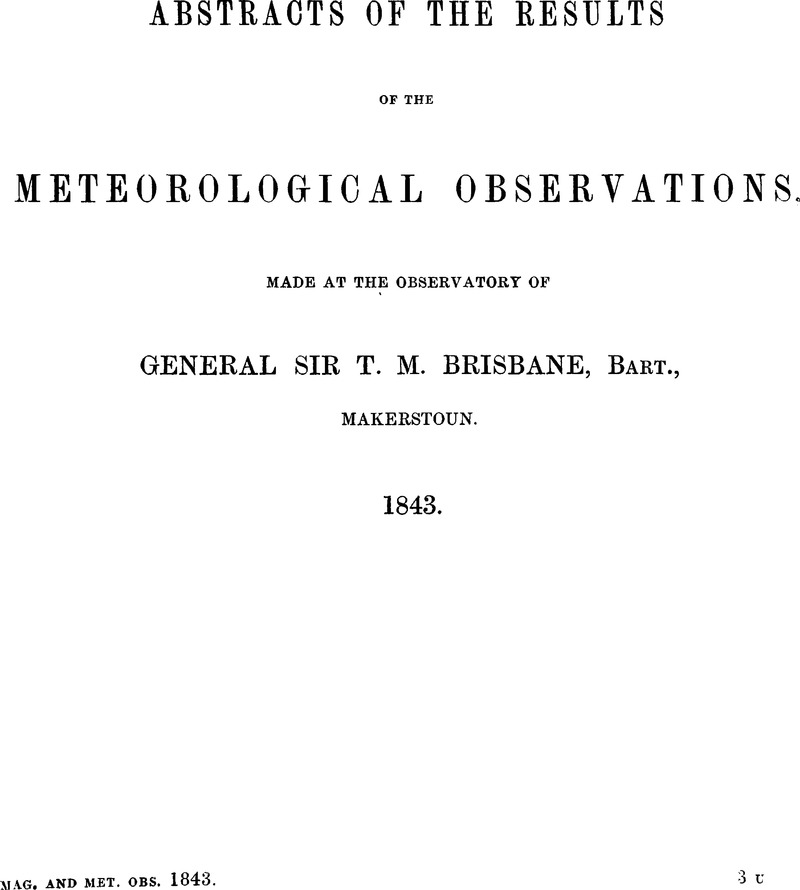No CrossRef data available.
Published online by Cambridge University Press: 17 January 2013

page 263 note * These differences and their variations are probably due to three causes; first, difference of exposure of the register and dry bulb thermometers; second, difference in the form of the diurnal curve for the various months ; third, less conducting power of the spirit of wine of the minimum thermometer than of the mercury of the maximum. From the last, the registered minimum will, in general, be higher than the true minimum, and so much the more when the change of temperature is most rapid, or when the diurnal range is greatest, namely, near the Equinoxes. See Table III.
page 266 note * There are three couples of homonymous hours given in the Table, but only one couple gives satisfactory results. It will be found that twelve or thirteen combinations of hours, having the common interval of eleven hours (nearly the critical interval), will give a mean error for the year from a third to a half less than that from the twelve combinations of homonymous hours, the combinations commencing with 10h P.M. and 9h A.M., 11h P.M. and 10h A.M., and so on to the twelfth or thirteenth couple.
page 267 note * In this volume, I have followed the practice of meteorologists, and have grouped the months into the meteorological seasons. As far as the results for the year 1843 go, the value of this mode of grouping seems very questionable: With the single exception of the mean temperature, the facts (diurnal range, critical intervals, and periods of maxima) are more directly related to the astronomical seasons. Even for the mean temperature each year would require a particular mode of grouping; it is only on the average of a number of years that June, July, and August are entitled to be called Summer. In 1843, it will be seen that July, August, and September are the three months with the highest mean temperature.
The cause of the diminished diurnal range in the midsummer months is obviously due to the sun's approach to perpetual apparition, as has been pointed out elsewhere.—See Professor Forbes's Supplementary Report on Meteorology, Report Brit. Assoc. 1840, page 52.